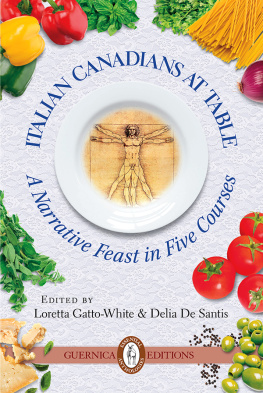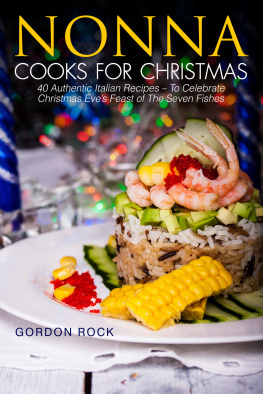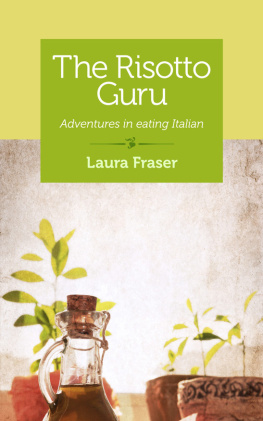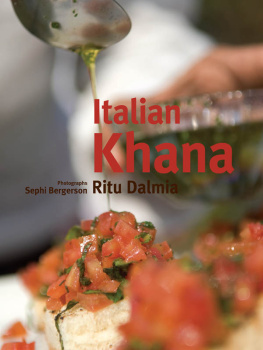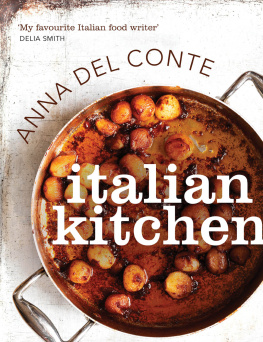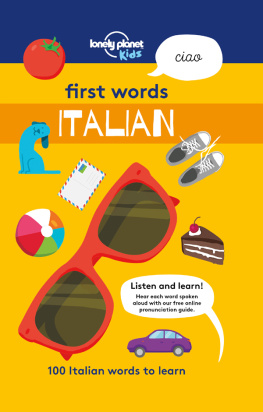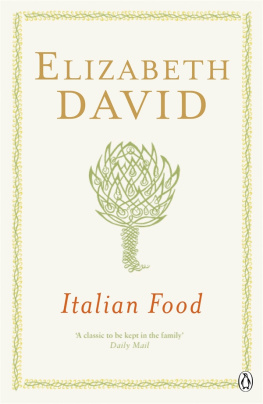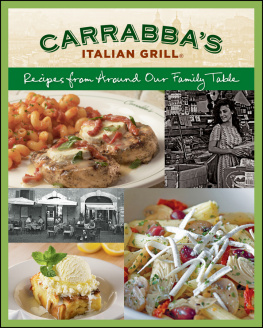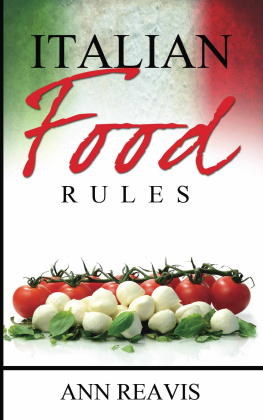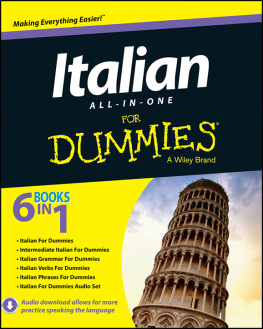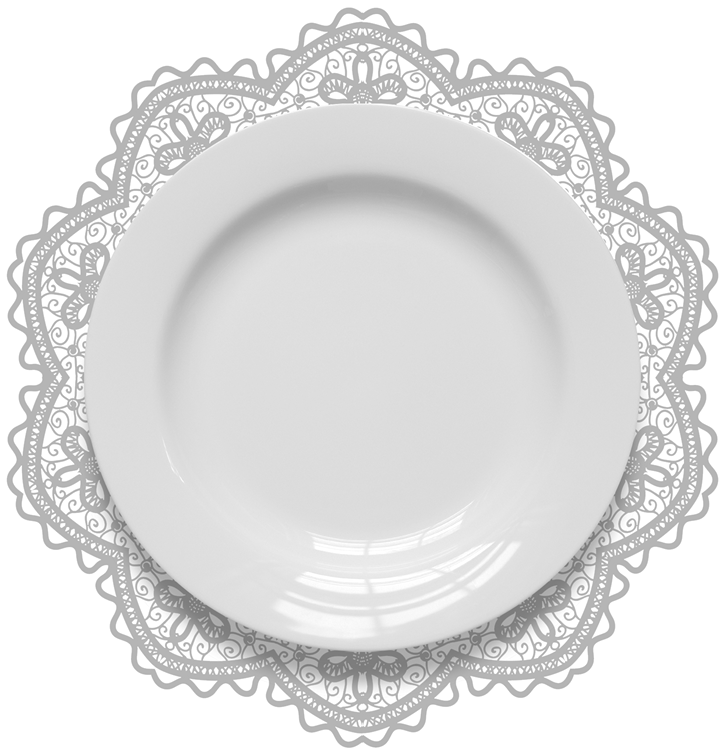ESSENTIAL ANTHOLOGIES SERIES 3
Italian Canadians at Table:
A Narrative Feast in Five Courses

Edited by
Loretta Gatto-White & Delia De Santis
GUERNICA
TORONTO BUFFALO BERKELEY LANCASTER (U.K.)
2013
Introduction
A bite of Canadas culinary minestra might taste like smoked salmon stuffed perogies, on a bed of curried lentil couscous layered with foie gras quenelle, garnished with a crackling of pemmican prosciutto and a dusting of dulse in a pool of ginger, lemon grass and sake reduction, followed by a molten butter tart a la mode; a feast to which every culture calling Canada home has contributed.
Canadas rich food culture has run the gamut from old world culturally diverse commercial and domestic artisan products avail able wherever predominantly working-class ethnic peoples settled, such as Torontos Ward, Montreals The Main and Vancouvers Chinatown, to post-war, French-inspired haute cuisine, or as I call it the grand hotel, country club scoff of smugly prosperous1950s Canada.
Prosperity also created the new world fast-food nation purveying a distinctly American cuisine and bastardized old world ethnic dishes where Aunt Jemima and Betty Crocker duke it out for shelf space with Mama Bravo and Chef Boyardee. In our twenty-first century, we see a return to old world artisan products and the slow-food cultural values attached to their production, sale and consumption, now ironically the purview of the privileged class.
The progressive acculturation of Italian cuisine into Canadas national culinary identity is a testament to this social phenomenon. At the turn of the century, Torontos Italian bakeries vied for supremacy, some even resorting to branding their loaves to ensure the customer quality and authenticity,in Muskoka, family-run macaroni factories produced artisan pasta extruded from bronze-dies. Socially ambitious Italian families fed the gentrys hunger for fine European comestibles, opening wholesale and retail gourmet food emporia throughout our urban centres.
Still, Italian cuisine, especially that from the Mezzogiorno , the origin of a large share of Canadas Italian migrs, was disdained by restaurant patrons who regarded French haute cuisine as being truly refined, even though it was usually cooked and served by Italians. The economic turmoil of the Depression devastated many Italian family-owned food businesses which, being reliant on a labyrinthine system of community banks, precursors to credit unions, failed early and hard taking the Italian communities entrepreneurial house of cards with it. This interruption lasted until the boys came home when Italian cuisine was once again relegated to behind the kitchen doors, except for its new canned and frozen incarnations, whose stereotyped public face was represented by Mama Bravo then signora Michelina, et al.
Greasy spoons and restaurant chains served-up giant bowls of gluey, over-cooked spaghetti drowning in an acrid pool of canned tomato sugo graced by polpette as hard as bocce balls and crowned with a sprinkling of ersatz parmesan, washed down with domestic red plonk from gallon jugs, or worse, if it was a festive occasion something sparkling like Spumante Bambino.
The publics concept of sophisticated five star cuisine was still solidly French with few exceptions, until the 1980s when Northern Italian cuisine, by little stretch of the culinary palate, became trendy with its focus on butter, cream, truffles, risotto, polenta and veal, and a notable absence of strong tastes and colours. Its soft and velvety textures were an easy segue from central France to Italy.
But something has happened to our palates, arteries and social aspirations between then and now. We want to eat food that is as sustaining of our bodies as it is of our environment. We want the rustic produce and products directly out of the farmers field or the artisans hand, to gather-up our families generations on Sunday and share boldly coloured and flavourful food from big steaming majolica platters. Well plant heritage tomatoes amongst the genteel delphiniums in our urban courtyards, challenge city hall for our right to raise chickens and wood-roast peppers in midtown backyards, forage in city parks for spring cicoria, and take courses on how to cure and hang our own Berkshire Pork prosciutto in downtown lofts.
In short, Canadians have begun a risorgimento of homey, predominantly southern Italian cuisine which resonates beyond the domestic kitchen to the gregarious communal restaurant table, the bustling boisterous farmers markets, the clang and clatter of outdoor cafs, the weekend line-ups at the deli counters of the few remaining mom and pops Italian grocers where you can run a tab and delivery is free. As the cheekily chauvinistic saying goes: it seems there are only two kinds of people, Italians and those who wish they were. Melanzane, spaghetti, polpette, rapini, oregano, peperoncini, baccal, tripe, anchovies, bottarga, pecorino Romano, the yin yang of agro-dolce verdure and the deep dark red of Nero dAvola bring it on! cries Canada. The cucina casalinga and cucina povera are the new haute cuisines.
Theres no poverty of taste, history or tradition in the rich cultural heritage of our Italian Canadian cuisine; its bon gusto and piquancy is served-up in these entertaining narratives. Tutti a tavola a mangiare.
Loretta Gatto-White
I dedicate this book to the memory of my late beloved husband,
Jim White, whose passion for life, art, good food and all things Italian inspires me still, and to my late father, Gary Gatto, the best cook
and raconteur in the family. Mi mancate entrambi.
Loretta Gatto-White

To my late parents, Antonia and Saverio, and to my husband,
Ercole and our loving family.
Delia De Santis
First Course:
Antipasto

Menu
Introduction
First Course: Antipasto

Plump Eggplant
Marisa De Franceschi
tomatoes
Domenico Capilongo
Summer and Figs
Joseph Ranallo
An Extra Helping
Loretta Di Vita
The Kitchen Table
Carlinda DAlimonte
The Birth and Rebirth of Biscotti
Dosolina Cotroneo
Coffee Envy
Loretta Di Vita
Giant Rabbits and the Best Way to Barbeque
Loretta Gatto-White
Grocery Stories
Jim Zucchero
muskoka pasta
Domenico Capilongo
al dente
Domenico Capilongo
Pasta is magic, the rest is life
Loretta Gatto-White
Second Course: Primo

This is Sunday Lunch
Angela Long
Learning to Cook with Dante and Mia Suocera
Caroline Morgan Di Giovanni
My Authentic Italian Cooking Experience: in Edmonton
Debby Waldman
My Mothers Tomato Sauce
Venera Fazio
Crostoli, Intrigoni, Bugie
Genni Gunn
Excerpt from Made Up of Arias
Michelle Alfano
Making Olives and Other Family Secrets

